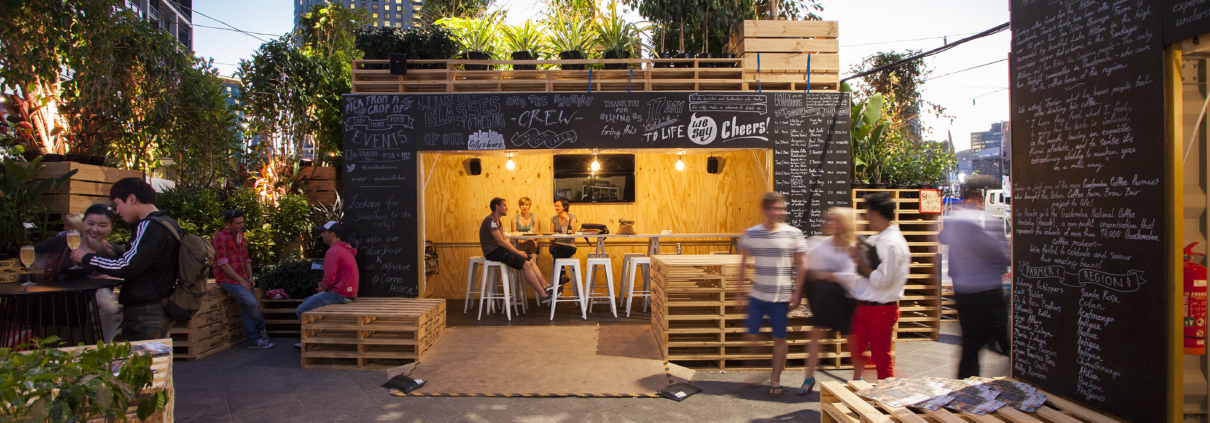Pallets Move the World: Urban Coffee Farm
Pallets Move the World: Urban Coffee Farm
Urban Recycling
Wooden pallets stood at the center of attention during the 17-day Melbourne Food and Wine Festival. Wood is a natural product that can be recycled, reused or upcycled in a variety of ways. Whatever you call it, the HASSELL design team used pallets donated from a local pallet manufacturer for the Urban Coffee Farm. As well as availability and cost-efficiency, the design team also selected the pallets to make a visual statement of the coffee story, understanding where the coffee they drink comes from and the journey made along the way – from plantation to café. At the conclusion of the festival, the pallets were returned to the pallet manufacturer.
About the Project
In March 2013 the Urban Coffee Farm and Brew Bar, designed by HASSELL architects, brought Australia’s Melbourne Food and Wine Festival visitors together in an engaging learning and social environment that responded to this year’s festival theme of earth.
The core building materials of the Urban Coffee Farm were shipping containers and pallets. These materials from the transportation industry were the inspiration for the design team, to remind us of the journey made by coffee beans – from jungle plantation to city cafe. The Tasting Café and educational presentation zones were housed in shipping containers, disguised by the sculpted terrain of planted shipping pallets and crates.
The young designers group at HASSELL took advantage of Melbourne Square’s iconic Red Stairs public amphitheater to create a terraced landscape to install their farm and cafe. The space was then filled with coffee trees to give visitors a glimpse of the story of coffee – from seedling to coffee cup – while wandering through the farm. The pallets and containers used in the landscape brought to life the story about coffee, inspiring coffee drinkers to think about its origins, production and transport.
HASSELL has succeeded in transforming this space into an innovative pop-up experience that not only delivered on taste but also on design. The design team celebrated the REUSE of objects in order to serve the urban culture their coffee. A total of 125 coffee trees from a disused coffee plantation in New South Wales were used on the Farm and were later sold to someone who will replant them in Victoria. Over 2,000 tropical plants used to create the jungle effect were given back to the nursery that donated them for the duration of the Festival.
About 1,500 pallets were also donated for the Festival. These pallets were returned to the owner when the Festival ended. The three Port of Melbourne shipping containers, refitted as a bistro and kitchen, were at the end of their useful life; this was their final destination.



